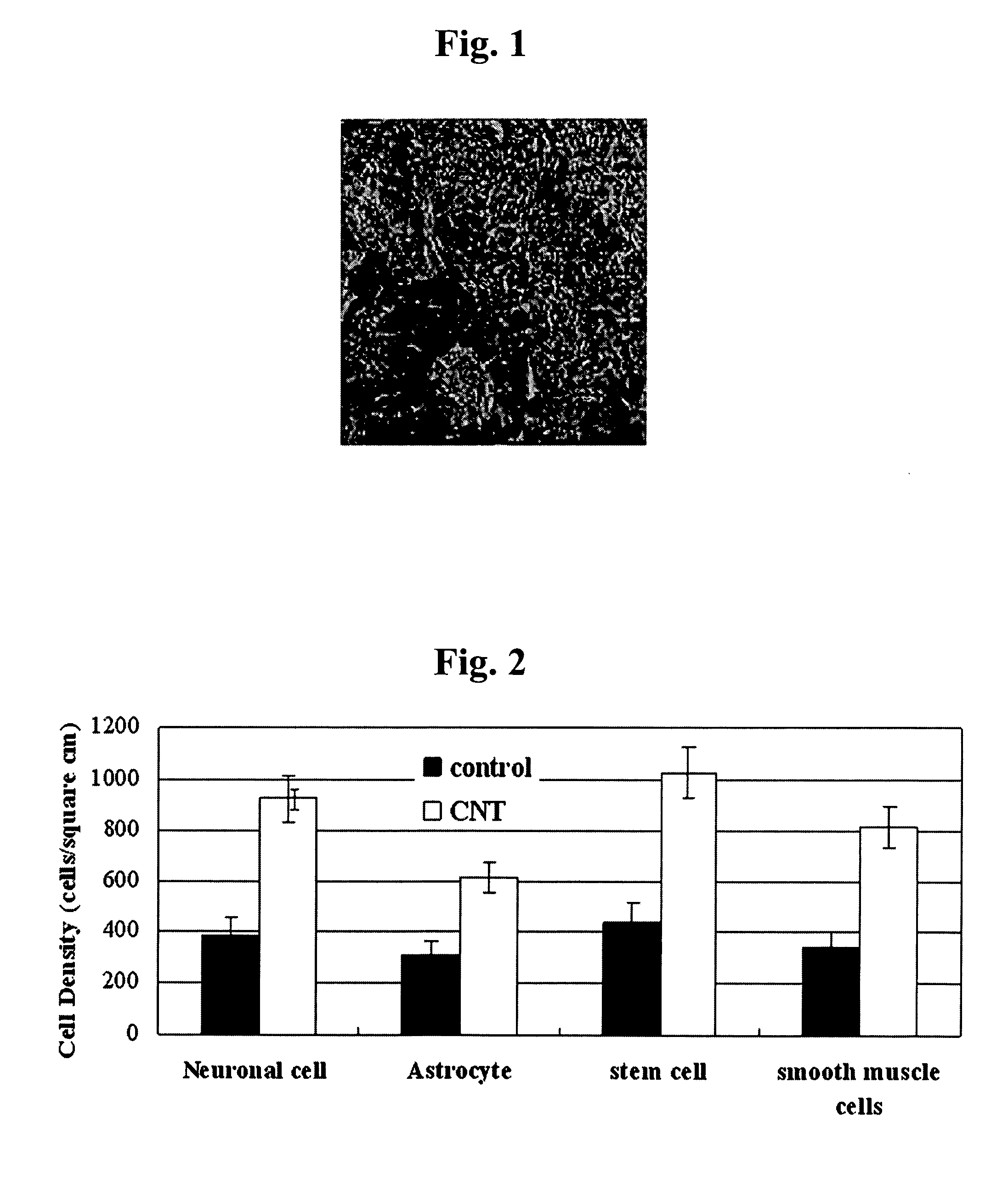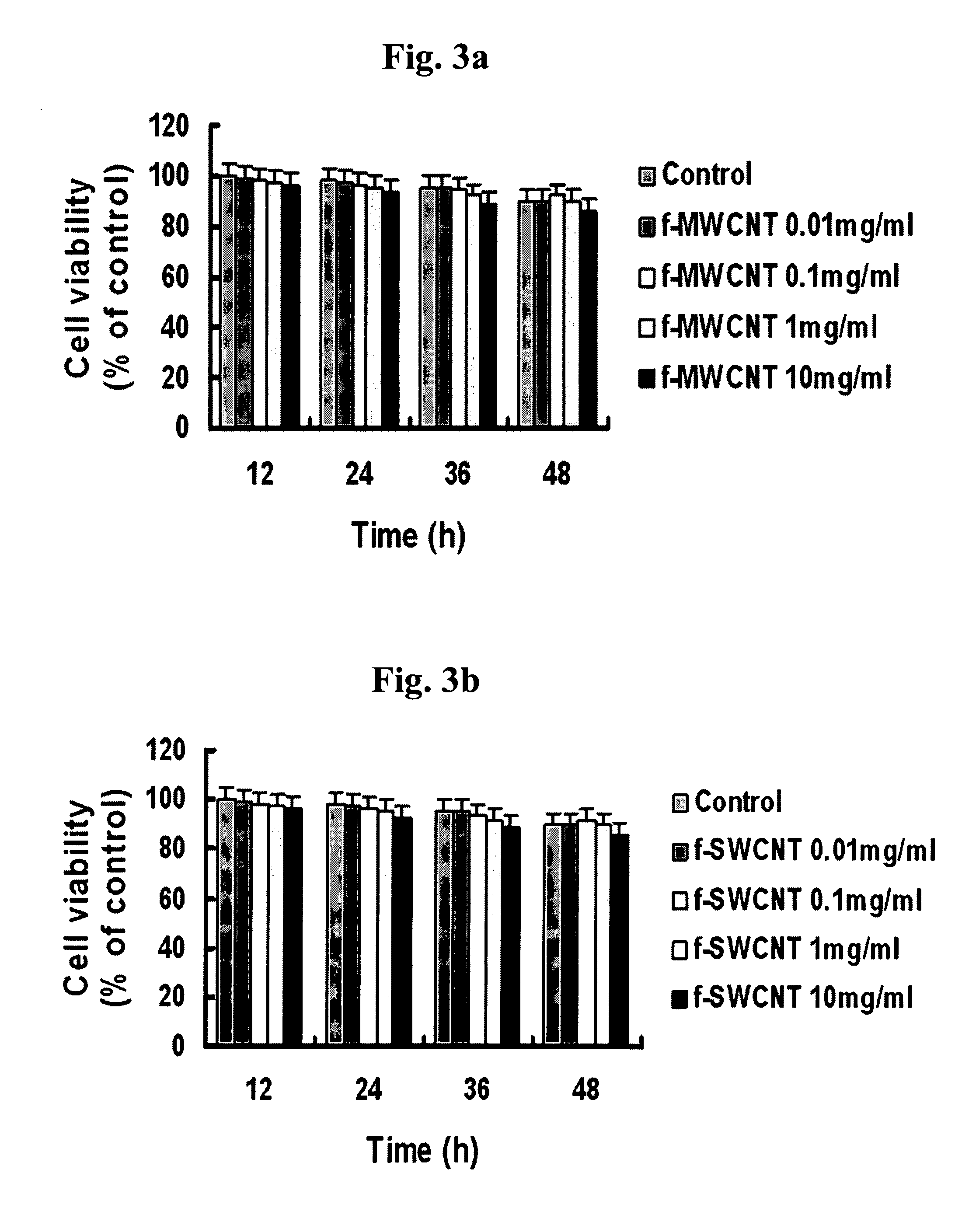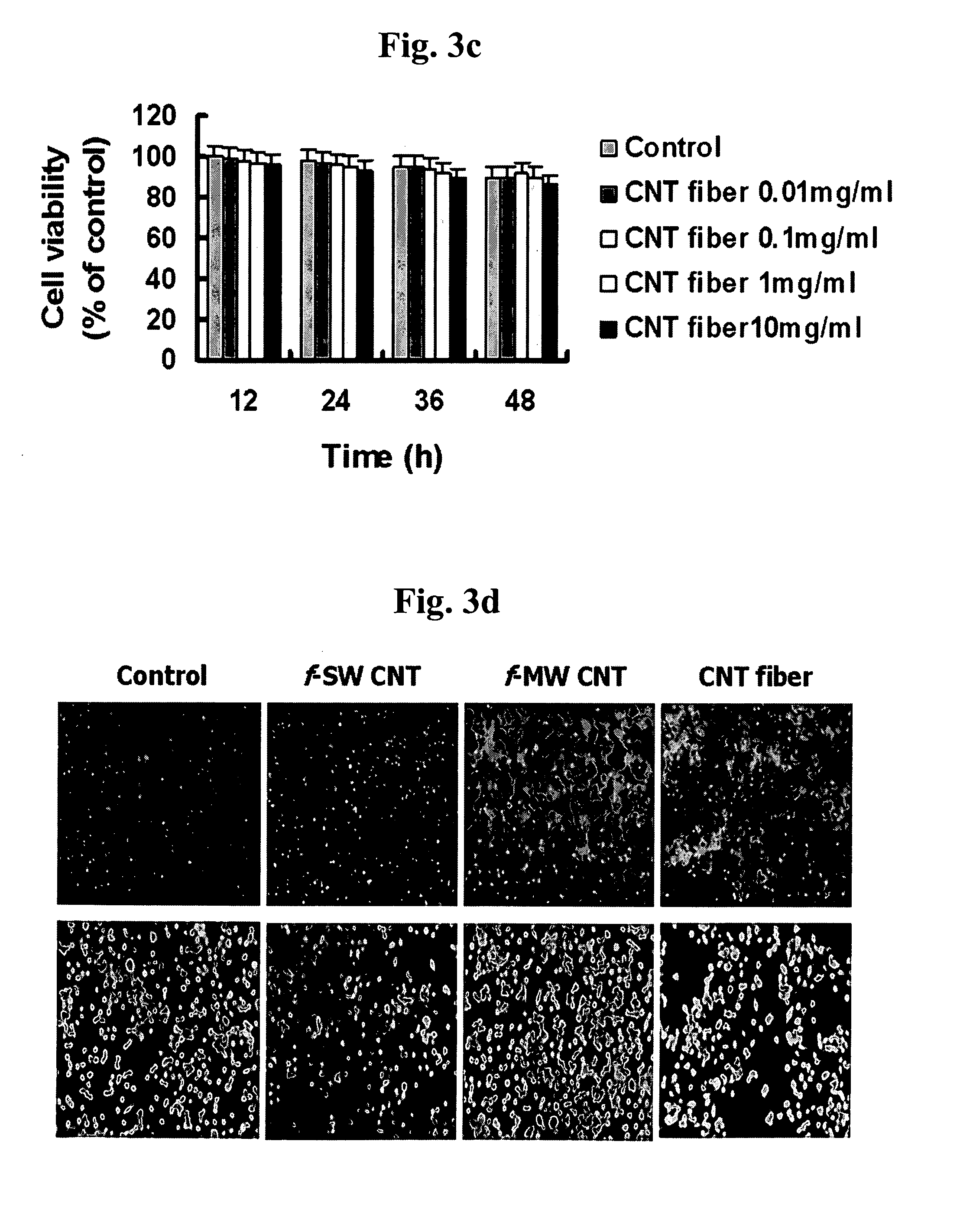Carbon nanotubes serving as stem cell scaffold
- Summary
- Abstract
- Description
- Claims
- Application Information
AI Technical Summary
Benefits of technology
Problems solved by technology
Method used
Image
Examples
examples
Materials and Methods
Cell Culture
[0051]SK-NSH (ATCC) was used as neuronal cells and cultured in DMEM (GIBCO) supplemented with 10% fetal bovine serum (FBS, GIBCO). P19 EC (embryonic carcinoma, Cell Bank, Korea), a subclone of P19 mouse embryonal carcinoma cell line was used as stem cells and cultured in α-MEM (GIBCO) supplemented with 7.5% Calf serum (CS, GIBCO) and 2.5% FBS (GIBCO). In addition, astrocyte A172 (ATCC) was used for experiments and cultured in the same culture as SKN-SH. Using cells, cytotoxicity, cell adhesion and structure-forming potential of CNT were experimented.
Carbon Nanotubes
[0052]Three types of carbon nanotubes, functionalized Single-Walled CNT (f-SWCNT), functionalized Multi-Walled CNT (f-MWCNT) and CNT nanofiber were used. The characteristics of carbon nanotubes are summarized in Table 1. f-SWCNT and f-MWCNT were functionalized with carboxyl group.
TABLE 1Itemsf-SWCNTf-MWCNTCarbon nanofiberDiameter (nm)0.6-2.1 nm15-50 nm50-170 nmLength (μm)—10-20 μm 10-20 μm...
PUM
 Login to view more
Login to view more Abstract
Description
Claims
Application Information
 Login to view more
Login to view more - R&D Engineer
- R&D Manager
- IP Professional
- Industry Leading Data Capabilities
- Powerful AI technology
- Patent DNA Extraction
Browse by: Latest US Patents, China's latest patents, Technical Efficacy Thesaurus, Application Domain, Technology Topic.
© 2024 PatSnap. All rights reserved.Legal|Privacy policy|Modern Slavery Act Transparency Statement|Sitemap



